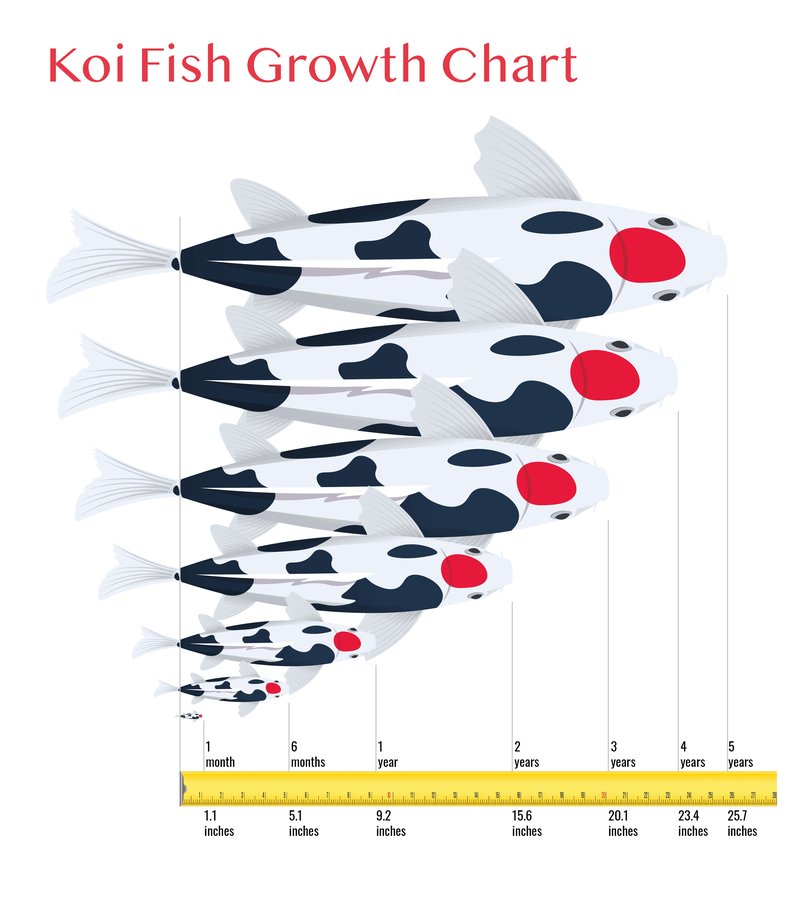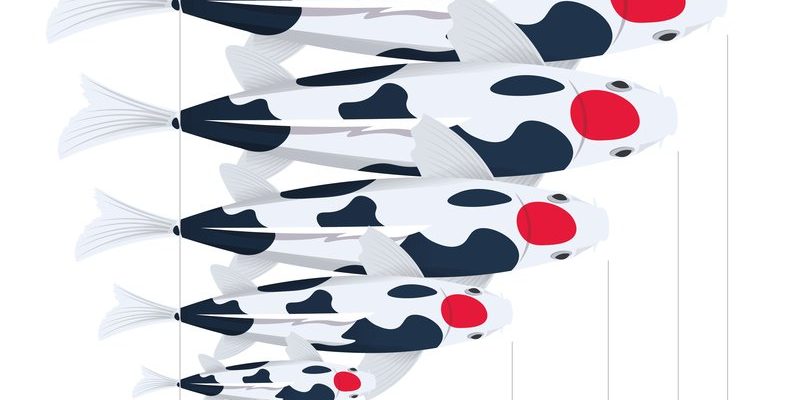
Koi growth can vary based on several factors, including their environment, diet, and even the breed. It’s kind of like how we grow at different rates depending on our genes, nutrition, and lifestyle. Let’s dive into the fascinating world of koi growth rates, and I promise you’ll have a clearer picture in no time!
Factors Influencing Koi Growth Rates
You might be wondering what affects how fast koi grow. The truth is, several key factors play a role in their growth journey. Let’s break these down.
Water Quality
First, water quality is crucial. Just like we need clean air and water to thrive, koi need high-quality water to stay healthy. Poor water conditions can stunt their growth. Regularly testing your pond’s pH, ammonia, and nitrite levels can help maintain a healthy environment for your koi. Ideally, koi thrive in temperatures between 65°F and 75°F. If the water is too cold or too hot, it can slow down their growth.
Diet and Nutrition
Next up is diet. Koi are omnivores, which means they enjoy a varied diet. A balanced diet rich in protein, vitamins, and minerals is essential for optimal growth. High-quality koi pellets are a great option, but don’t forget to mix it up! Adding veggies like peas, lettuce, and even fruits can keep your koi happy and healthy. It’s a bit like how we feel energized when we eat a balanced meal rather than junk food.
Age and Genetics
Another important factor is age and genetics. Koi generally grow quickly in their first few years. In the first year, they can grow up to 12 inches or more, depending on the conditions. After that, their growth may slow down. Different breeds also have different growth potentials. For instance, some types, like Kohaku and Sanke, are known for rapid growth, while others may grow more slowly. Just like people, some koi are destined to be bigger than others!
Typical Growth Rates of Koi
Understanding typical growth rates can help set your expectations. Let’s explore what you can generally expect as your koi grow.
Year One: Rapid Growth
During their first year, koi can grow remarkably fast. In optimal conditions, they can jump from a tiny fry of just a few inches to about 12 inches long. It’s like watching a toddler go through a growth spurt! This rapid growth is primarily due to high protein intake and favorable water conditions.
Years Two to Three: Steady Progress
From years two to three, growth slows down a bit. They might add about 3 to 6 inches during this period. This stage is essential for building their body structure and health, setting them up for later growth spurts. If your koi has reached around 18 inches by the end of year three, you’re doing well!
Years Four Onwards: Slower Growth
Once koi enter their fourth year and beyond, you’ll notice the growth rate significantly decreases. At this point, they might add only 1 to 3 inches each year. However, many koi can live for 20 years or more, so don’t be discouraged if they seem to have slowed down! Their maximum size can vary widely based on breed and care, with some koi reaching lengths of 24 inches or more.
Maximum Size of Koi
You might be curious about how big koi can actually get. The truth is, their size can range dramatically based on several factors. Let’s dig into this a little deeper.
Standard Sizes
Most koi that you find in backyard ponds typically max out around 24 to 36 inches when they reach adulthood. However, certain varieties, like the Jumbo koi, can grow even larger! These big boys can reach up to 48 inches under the right conditions. Just imagine a fish that’s longer than a large pizza!
Environmental Impact on Size
The environment plays a huge role in determining how big your koi will grow. Koi kept in larger ponds with ample space generally grow larger than those in smaller ponds. Think of it as living in a spacious house versus a cramped apartment. The more room they have to swim, the healthier they are, which directly impacts their growth.
Choosing Breeds for Size
If size is important to you, consider the breed of koi carefully. While most koi can grow impressively, certain breeds like the Yamabuki and Showa are known for their larger sizes. Doing a bit of research can ensure you select the right variety to meet your expectations.
How to Promote Healthy Growth in Koi
Ultimately, you want your koi to thrive, right? Here’s how you can do just that.
Providing Adequate Space
First, make sure your koi have enough space to swim and grow. A larger pond not only allows for bigger fish but also creates a more stable environment. A good rule of thumb is to provide at least 1,000 gallons of water for every 1 or 2 koi. This spacious life will minimize stress and promote healthy growth!
Regular Monitoring and Maintenance
Next, keep an eye on the water quality. Regularly test your pond water and perform necessary maintenance like changing filters and cleaning debris. Healthy water leads to healthy fish, which means faster growth and a lively pond!
Supplementing with Quality Foods
Lastly, don’t skimp on quality foods. Invest in high-nutrient koi pellets and consider occasional treats like natural foods. The right nutrition will support their growth and overall health.
Common Misconceptions About Koi Growth
While learning about koi growth, you might come across some common myths. Let’s clear those up!
Myth: Koi Grow in Size Due to Overfeeding
One common misconception is that overfeeding koi will make them grow faster. In reality, overfeeding can harm their health and lead to poor water quality. It’s about providing the right amount and type of food, not just more food.
Myth: Koi Growth is Universal
Another myth is that all koi have the same growth rate. As mentioned earlier, different breeds grow at different rates. Some might shoot up quickly, while others take their time. It’s important to manage your expectations depending on the breed you choose.
Myth: Bigger is Always Better
Lastly, there’s the idea that bigger koi are always healthier. However, size isn’t everything. A smaller koi can be just as healthy as a larger one if it’s well-cared for. Focus on providing a great environment and diet for all your fish!
Understanding how fast koi grow involves recognizing the various factors that influence their growth, including water quality, diet, and genetics. Watching these fish grow can be a rewarding experience, much like tending to a garden. By providing the right conditions and care, you can help your koi reach their full potential—whether they end up as beautiful 24-inch specimens or even larger.
You’ll find that as your koi grow, not just their size, but their personalities will shine through too. So, take your time, enjoy the process, and embrace this vibrant addition to your pond. Happy koi keeping!

